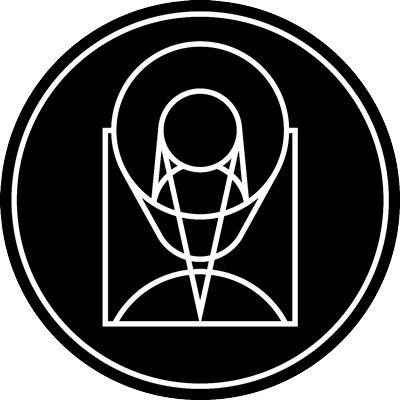Hubble's Sweeping View of the Coma Cluster of Galaxies

stsci_2008-24a June 10th, 2008
Credit: NASA, ESA, and the Hubble Heritage Team (STScI/AURA) Acknowledgment: D. Carter (Liverpool John Moores University) and the Coma HST ACS Treasury Team
NASA's Hubble Space Telescope captures the magnificent starry population of the Coma Cluster of galaxies, one of the densest known galaxy collections in the universe. The Hubble's Advanced Camera for Surveys viewed a large portion of the cluster, spanning several million light-years across. The entire cluster contains thousands of galaxies in a spherical shape more than 20 million light-years in diameter. Also known as Abell 1656, the Coma Cluster is over 300 million light-years away. The cluster, named after its parent constellation Coma Berenices, is near the Milky Way's north pole. This places the Coma Cluster in an area unobscured by dust and gas from the plane of the Milky Way, and easily visible by Earth viewers. Most of the galaxies that inhabit the central portion of the Coma Cluster are ellipticals. These featureless "fuzz-balls" are pale goldish brown in color and contain populations of old stars. Both dwarf, as well as giant ellipticals, are found in abundance in the Coma Cluster. Farther out from the center of the cluster are several spiral galaxies. These galaxies have clouds of cold gas that are giving birth to new stars. Spiral arms and dust lanes "accessorize" these bright bluish-white galaxies that show a distinctive disk structure. In between the ellipticals and spirals is a morphological class of objects known as S0 (S-zero) galaxies. They are made up of older stars and show little evidence of recent star formation; however, they do show some assemblage of structure - perhaps a bar or a ring, which may give rise to a more disk-like feature. This Hubble image consists of a section of the cluster that is roughly one-third of the way out from the center of the cluster. One bright spiral galaxy is visible in the upper left of the image. It is distinctly brighter and bluer than galaxies surrounding it. A series of dusty spiral arms appears reddish brown against the whiter disk of the galaxy, and suggests that this galaxy has been disturbed at some point in the past. The other galaxies in the image are either ellipticals, S0 galaxies, or background galaxies far beyond the Coma Cluster sphere. The data of the Coma Cluster were taken as part of a survey of a nearby rich galaxy cluster. Collectively they will provide a key database for studies of galaxy formation and evolution. This survey will also help to compare galaxies in different environments, both crowded and isolated, as well as to compare relatively nearby galaxies to more distant ones (at higher redshifts).
Provider: Space Telescope Science Institute
Image Source: https://hubblesite.org/contents/news-releases/2008/news-2008-24
Curator: STScI, Baltimore, MD, USA
Image Use Policy: http://hubblesite.org/copyright/

- ID
- 2008-24a
- Subject Category
- C.5.5.3
- Subject Name
- Coma Cluster, Abell 1656
- Credits
- NASA, ESA, and the Hubble Heritage Team (STScI/AURA) Acknowledgment: D. Carter (Liverpool John Moores University) and the Coma HST ACS Treasury Team
- Release Date
- 2008-06-10T00:00:00
- Lightyears
- 300,000,000
- Redshift
- 300,000,000
- Reference Url
- https://hubblesite.org/contents/news-releases/2008/news-2008-24
- Type
- Observation
- Image Quality
- Good
- Distance Notes
- Distance in lightyears
- Facility
- Hubble, Hubble
- Instrument
- ACS/WFC, ACS/WFC
- Color Assignment
- Cyan, Orange
- Band
- Optical, Optical
- Bandpass
- SDSS g, I
- Central Wavelength
- 475, 814
- Start Time
- Integration Time
- Dataset ID
- Notes
- Coordinate Frame
- ICRS
- Equinox
- 2000.0
- Reference Value
- 195.13063012475, 28.08153413129
- Reference Dimension
- 10816.00, 7679.00
- Reference Pixel
- 5212.43864121194, 6602.67899182844
- Scale
- -0.00001389036, 0.00001389036
- Rotation
- -12.06863404662
- Coordinate System Projection:
- TAN
- Quality
- Full
- FITS Header
- Notes
- World Coordinate System resolved using PinpointWCS 0.9.2 revision 218+ by the Chandra X-ray Center FITS X FITS Y EPO X EPO Y 891.73 1748.76 4268.02 1886.26 563.43 2182.47 3442.38 2592.01 854.60 1306.63 4376.85 999.35 2184.39 1571.13 6863.94 2068.69 1465.62 1175.00 5625.98 996.68 Center Pixel Coordinates: 5408.00 195.11852553003 3839.50 28.04457716983
- Creator (Curator)
- STScI
- URL
- http://hubblesite.org
- Name
- Space Telescope Science Institute Office of Public Outreach
- outreach@stsci.edu
- Telephone
- 410-338-4444
- Address
- 3700 San Martin Drive
- City
- Baltimore
- State/Province
- MD
- Postal Code
- 21218
- Country
- USA
- Rights
- http://hubblesite.org/copyright/
- Publisher
- STScI
- Publisher ID
- stsci
- Resource ID
- STSCI-H-p0824a-f-10816x7679.tif
- Resource URL
- https://mast.stsci.edu/api/latest/Download/file?uri=mast:OPO/product/STSCI-H-p0824a-f-10816x7679.tif
- Related Resources
- http://hubblesite.org/newscenter/archive/releases/2008/24
- Metadata Date
- 2022-07-06T00:00:00
- Metadata Version
- 1.2
Detailed color mapping information coming soon...













